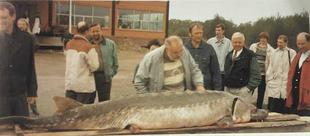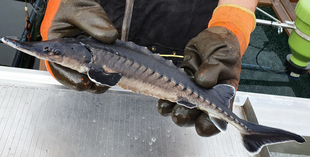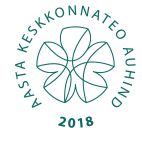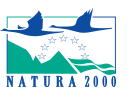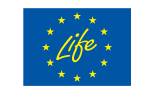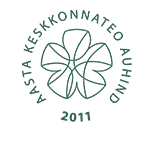|
Background The history of sturgeon (Acipenser oxyrinchus) in the Baltic Sea has been particularly tragic. This extraordinary fish species, widely known for its impressive size and black caviar, got extinct here in the last century. The main reasons for this were the deterioration of the quality of spawning rivers through migratory barriers and water pollution and overfishing. The last specimen of natural origin was caught in 1996 in Estonian waters. Baltic sturgeon is included in a list of the priority species in Annex II for the EU Habitats Directive, marked with an asterisk.
Baltic Sea sturgeon, Acipenser oxyrinchus oxyrinchus, is an anadromous species that reproduces in fresh water and spends most of its life at sea. The species is long-lived (up to 100 years) and grows large (up to 4.5 m total length and 350 kg in weight). The life cycle is long, with a late maturation occurring at an age of 12-18 years (up to 27 years in colder climate). As such, sturgeon populations reveal a reproductive cycle of 2-7 years over a period of up to 80 years which helps to maintain the populations stable for long periods of time but also is the key factor for the high sensitivity against overharvest.
The Baltic population of A. oxyrinchus has been traced back to 500 B.C. in archaeological remains in the Baltic Sea (Stankovic et al. 2010) while retreating in the range in the North-East Altantic and North Sea where it was replaced by the European sturgeon radiating from the Mediterranean (Nikulina & Schmölcke 2016). Reproduction was described in the major rivers entering the South, East and North-Eastern Baltic Sea tributaries and the tributaries to the lakes Onega and Ladoga. In the 19th century, the Baltic sturgeon ranged throughout the Baltic Sea still. The last recorded specimen of natural origin was caught in 1996 in the Estonian coastal waters not far from the Pärnu River mouth. The fish was 2,9 m long and weighed 136 kg. In the Gulf of Finland and Narva River, the last specimens were caught in 1941 and 1945. In 1992, the Baltic sturgeon was included as a priority species under Annex II of the Habitat Directive, at the time the scientific name of Acipenser sturio was still applied. It was only in preparation of the remediation measures in Germany that it was uncovered that the Baltic sturgeon did not belong to A. sturio, but represented the Atlantic sturgeon, Acipenser oxyrinchus oxyrinchus (Ludwig et al. 2002, 2008, 2009). These results were verified by other labs and the resulting conclusions of an international expert panel (Ritterhoff & Gessner 2004). Subsequently the results were adopted by the Helcom range states and in the Baltic Sea Action Plan. |
| ||||
WILDLIFE ESTONIA
NGO Wildlife Estonia is established in 2000. Our aim is to protect rivers and other aquatic habitats. We care about the nature, biodiversity and fish in particular.
HABITATS
Springs, rivers and lakes are our common treasure. The more natural status they have the more precious they are.
COMPETENCE
Successful application and implementation of river restoration and fish population status improvement projects. Scientific ichthyology studies with traditional and modern bio-telemetric methods.
Disclaimer on LIFE projects.
LIFE projects are co-financed by the European Union LIFE program. Views and opinions expressed are however those of the author(s) only and do not necessarily reflect those of the European Union. The European Union can not be held responsible for them.
CONTACTS
Eesti Loodushoiu Keskus, registration 80124928,
Address: Veski 4, 51005 Tartu, ESTONIA
Send e-mail:
Contact phone (+372) 51 76886
